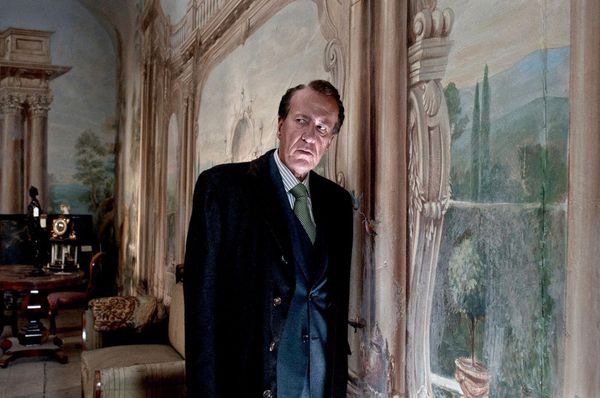Eye For Film >> Movies >> The Best Offer (2013) Film Review
The Best Offer
Reviewed by: Jennie Kermode

"Inside every forgery, there is something real," they say. For cineastes, there has to be, and Giuseppe Tornatore understands better than most both the romance and the illusion of film. This is his first English language feature but it's still set in Italy, immediately adding a layer of unreality. It gives him the opportunity to work with Geoffrey Rush, and it's difficult to imagine anyone else in the emotionally complex central role.
Great forgeries require real skill. Auctioneer Virgil Oldman is a master at identifying them, a man who can spot a treasure hidden beneath layers of dirt on what appears to be a worthless scrap of wood. His genius, however, has left him lonely and irascible, impatient with the failings of others. It is a testament to Rush's genius that viewers can still care for him. At the end of each day he goes home to sit in a secret room with the only women he has ever loved - the priceless beauties captured in paintings. As everyone else trails in his wake, only they look down on him. They know what is missing from his life.

It begins with a phone call. She tells him that her deceased father said only he was to manage her estate. It's not the kind of thing he would usually tolerate - first assessments are a junior's job - and to make things worse, when he does agree to meet her, she doesn't show up. Then there's another call, with what sound like very good excuses. Finally agreeing to take on the job, Virgil finds a curious piece of clockwork in the cellar. He takes it to his friend Robert (Jim Sturgess), who runs a repair shop and can fix up just about anything. Cleaning it up, they come to suspect that it's part of a rare and valuable automaton. So, although the woman on the phone continues to elude him, he goes back, searching for more.
There's a moment in underrated Nicole Kidman film Birthday Girl where the heroine explains that if she pretends not speak English, men fall for her faster. Virgil, who has always been more comfortable with an artist's interpretation of the real thing, finds himself gradually becoming obsessed with a woman he cannot see but whom he is convinced is somewhere in the house, watching him; she gets under his skin as no merely beautiful woman could. There's a magical realist quality to this part of the film, as all manner of possibilities stir the imagination. Virgil's world has always worked like clockwork. Now things go awry. Is there a ghost in the machine?
Part of a forger's craft involves not simply duplicating the images but replicating the strokes to be found in the original. Tornatore's film makes deft use of cinematic cliché to lead viewers astray. It's beautifully realised throughout, with cinematography so gorgeous that we're easily distracted from telling details. The only weak note is that the mystery woman's temperamental outbursts drag on too long, and are a little overdone; Sylvia Hoeks is good but doesn't share Rush's ability to keep us onside regardless. This strains credulity a bit, but that sense of magic keeps drawing us back. Then, woven into the whole, there are other threads. If the contrast between Virgil and Robert's views of relationships says something about generational difference and class, so does the former's tendency to look straight through the working class people he encounters, never guessing that they might have valuable things to communicate.
Not quite a masterpiece, this is nevertheless a very good impression of one, and something that deserves to be looked at again and again.
Reviewed on: 20 Mar 2014















